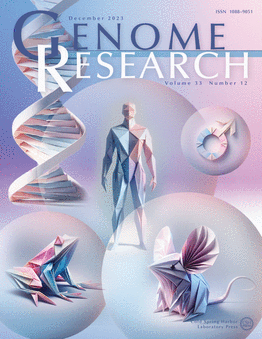利用牛津纳米孔测序技术精确追踪细菌爆发并减少甲基化引起的误差
IF 6.2
2区 生物学
Q1 BIOCHEMISTRY & MOLECULAR BIOLOGY
引用次数: 0
摘要
我们的研究以 Illumina 短读程测序数据为参照点,通过对 33 株长达 3 年的肺炎克雷伯氏菌疫情分离株进行重新测序,研究了牛津纳米孔技术在准确追踪疫情方面的有效性。通过对牛津纳米孔技术测序的基因组进行 cgMLST 和系统进化分析,我们发现了相当大的碱基错误,导致一些与疫情相关的菌株被错误地排除在疫情群之外。导致这些错误的是附近的甲基化位点,除了肺炎克雷伯菌外,其他菌株也会出现这种情况。基于这些数据,我们探索了基于 PCR 的测序方法和掩蔽策略,这两种方法都成功地解决了这些误差问题,确保了疫情追踪的准确性。我们将掩蔽策略作为一种生物信息工作流程(MPOA),以无参考文献的方式识别和掩蔽有问题的基因组位置。我们的研究强调了使用牛津纳米孔技术对原核生物进行测序的局限性,尤其是在调查疫情爆发方面。对于不能等待牛津纳米孔技术公司进一步技术开发的时间紧迫的项目,我们的研究建议使用基于 PCR 的测序或使用我们提供的生物信息工作流程。我们建议在发布结果时应提供基于读图的基因组质量控制。本文章由计算机程序翻译,如有差异,请以英文原文为准。
Accurate bacterial outbreak tracing with Oxford Nanopore sequencing and reduction of methylation-induced errors
Our study investigates the effectiveness of Oxford Nanopore Technologies for accurate outbreak tracing by resequencing 33 isolates of a 3-year-long Klebsiella pneumoniae outbreak with Illumina short-read sequencing data as the point of reference. We detect considerable base errors through cgMLST and phylogenetic analysis of genomes sequenced with Oxford Nanopore Technologies, leading to the false exclusion of some outbreak-related strains from the outbreak cluster. Nearby methylation sites cause these errors and can also be found in other species besides K. pneumoniae. Based on these data, we explore PCR-based sequencing and a masking strategy, which both successfully address these inaccuracies and ensure accurate outbreak tracing. We offer our masking strategy as a bioinformatic workflow (MPOA) to identify and mask problematic genome positions in a reference-free manner. Our research highlights limitations in using Oxford Nanopore Technologies for sequencing prokaryotic organisms, especially for investigating outbreaks. For time-critical projects that cannot wait for further technological developments by Oxford Nanopore Technologies, our study recommends either using PCR-based sequencing or using our provided bioinformatic workflow. We advise that read mapping–based quality control of genomes should be provided when publishing results.
求助全文
通过发布文献求助,成功后即可免费获取论文全文。
去求助
来源期刊

Genome research
生物-生化与分子生物学
CiteScore
12.40
自引率
1.40%
发文量
140
审稿时长
6 months
期刊介绍:
Launched in 1995, Genome Research is an international, continuously published, peer-reviewed journal that focuses on research that provides novel insights into the genome biology of all organisms, including advances in genomic medicine.
Among the topics considered by the journal are genome structure and function, comparative genomics, molecular evolution, genome-scale quantitative and population genetics, proteomics, epigenomics, and systems biology. The journal also features exciting gene discoveries and reports of cutting-edge computational biology and high-throughput methodologies.
New data in these areas are published as research papers, or methods and resource reports that provide novel information on technologies or tools that will be of interest to a broad readership. Complete data sets are presented electronically on the journal''s web site where appropriate. The journal also provides Reviews, Perspectives, and Insight/Outlook articles, which present commentary on the latest advances published both here and elsewhere, placing such progress in its broader biological context.
 求助内容:
求助内容: 应助结果提醒方式:
应助结果提醒方式:


